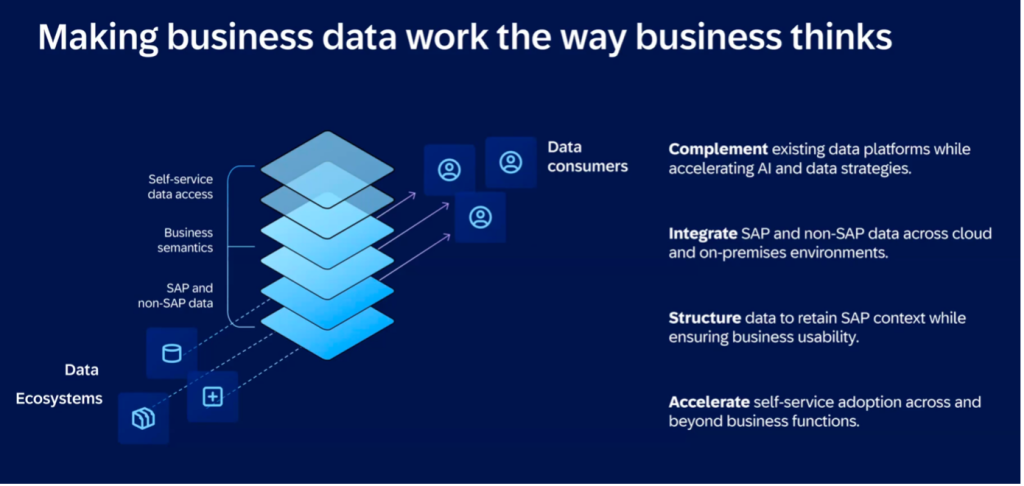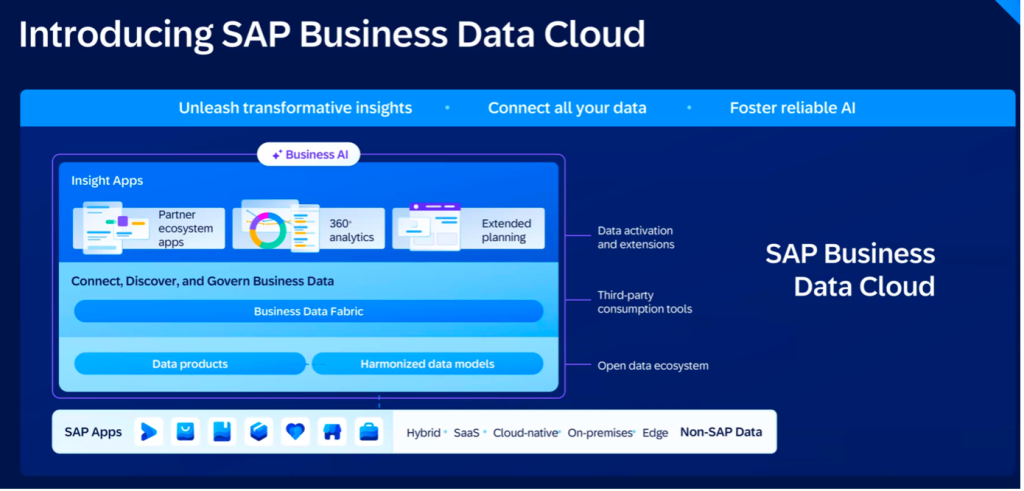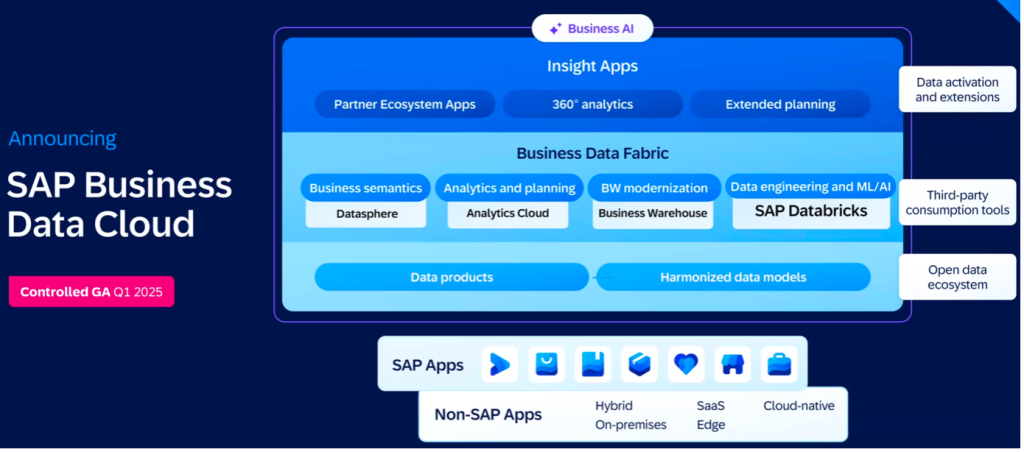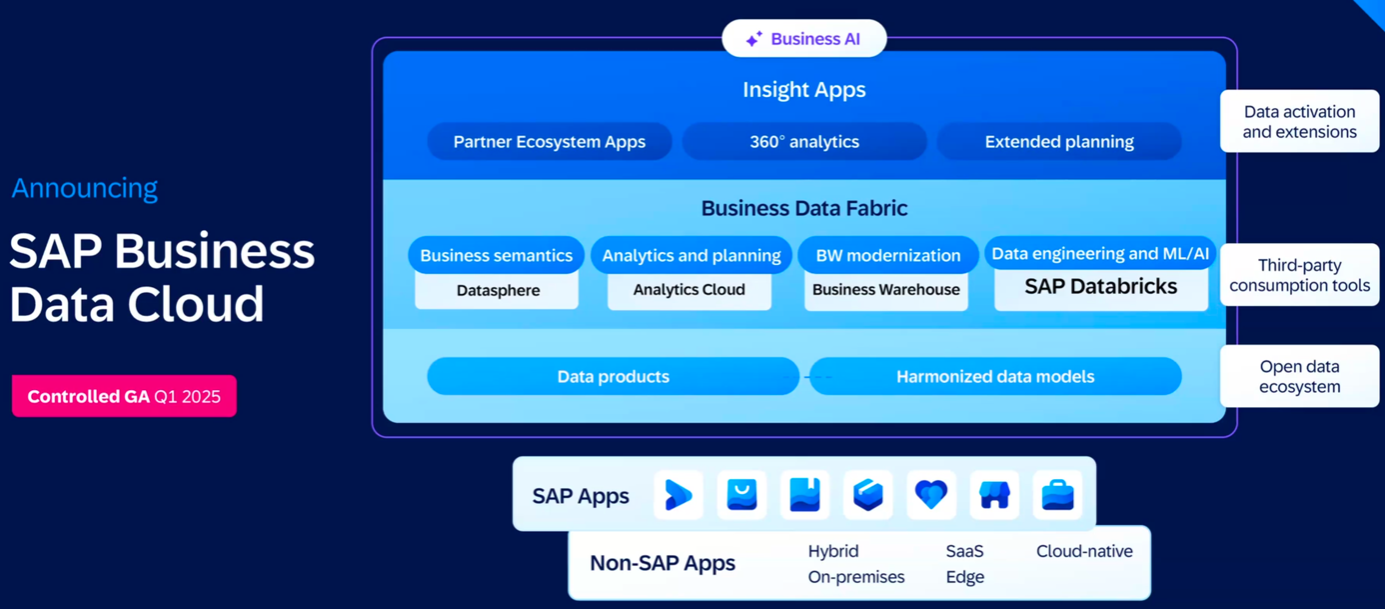
SAP Business Data Cloud: The Next Evolution of SAP Datasphere
Enterprise data management is going through some major changes, and SAP is making big moves with SAP Business Data Cloud. This new platform is basically an upgraded SAP Datasphere (formerly known as Data Warehouse Cloud), now incorporating SAP BW (yes, BW is still somewhat in the game!), SAP Datasphere, and Databricks into one powerful, unified system. The big reveal happened at SAP’s Business Unleashed event, and it’s all about helping businesses bring their data together across different cloud environments with ready to run analytical products.
Why Does SAP Business Data Cloud Matter?
SAP didn’t just wake up one day and decide to drop a new product. This move comes directly from customer feedback and industry trends. Here’s what businesses have been struggling with:
- Scattered data: Companies use multiple cloud providers and systems, making it tough to get a single source of truth. Having a hybrid data landscape and sending data across a multitude of systems simply does not make that better.
- Data trust issues: Only 34% of IT and business leaders say they fully trust their data. This is a staggering number, especially thinking about SAP data. How difficult is it to get thrustworthy data out of an SAP landscape. The answer: not that hard, in practice, extremely hard when combining with other sources and technology.
- Complicated governance: Keeping data clean, consistent, and well-managed is harder than ever. Again, try having good governance when your data is across many systems.
SAP Business Data Cloud aims to fix these issues by giving companies a unified, AI-ready platform that connects both SAP and non-SAP data while keeping all the valuable business logic intact.
This in itself is a brilliant move when done right. I still come across a multitude of clients who have great difficulty just getting their day to day reporting right, let alone, putting AI agents on their data to make the business run better. The old saying still goes: garbage in is garbage out. And believe me, many companies need many garbage trucks to fix their current landscape.
I remember many moons ago, Bill McDermott promising the market a unified data model (one domain model). It seems Christian Klein is doubling down on that promise with Business Data Cloud (BDC: get used to that acronym) and Data Products.
What’s Inside SAP Business Data Cloud?
Data Products – Ready-to-Use Data Sets
The big game-changer here is Data Products. These are pre-packaged, structured datasets from SAP applications, making life easier for data teams. Think of them as ready-to-use building blocks for analytics, AI, and business insights.
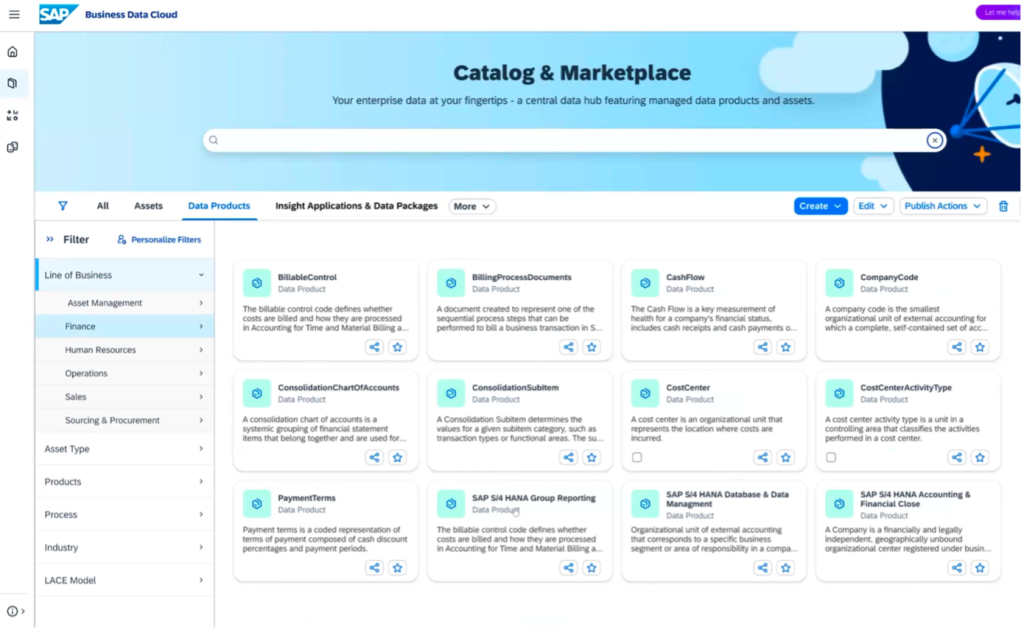
How Are Data Products Different?
- Managed by SAP: Unlike the old-school BW Business Content, which you had to maintain yourself, these Data Products are fully SAP-managed.
- Plug-and-play: No need to manually extract or clean data—it’s all set up for you.
- Works seamlessly with Databricks: This means easy integration for AI and advanced analytics
- Build on the new object store based on SAP HANA data lake files storage
This looks familiair, and in effect it is. Like mentioned, we’ve had multiple attempts in the past to get ready to run data models. Business content in BW being an ancient example, the Datasphere market place and its products, being the latest.
They always had one thing in common though: they never completely fitted the business needs. So eventhough having an out of the box model makes perfect sense. Have it working this time, is the challenge. Especially across the FULL SAP portfolio and beyond as SAP is promising today.
One thing is certain: it will take a lot of time for SAP to get it fully in place. The great thing: if its there it should be a fantastic vehicle to extend and run AI and Analytics on top off.
Business Data Fabric – Making Data Work Together
SAP has been pushing the idea of a Business Data Fabric, and this is its latest evolution. Instead of constantly moving and duplicating data, Business Data Fabric helps organizations work with data wherever it lives.
- Federated access: Get real-time insights without moving data around.
- Works with non-SAP sources: Easily connect data lakes, warehouses, and third-party apps.
- Built-in security: Analytical privileges, field masking, and data governance tools keep things locked down.
We at Interdobs have been fortunate to work with Datasphere for a long time. And eventhough federated access is certainly possible in many cases, once your volumes go up, persisting data is inevitable. It will be interesting see how SAP will get the performance challenges out of the equation.
Insight Applications – Pre-Built Dashboards
SAP is also launching Insight Applications, which are out-of-the-box dashboards designed to help businesses make faster decisions. Some of the first use cases include:
- 360-degree spend analysis
- Cash flow and working capital insights
- HR workforce analytics
- Supply chain risk management
These tools are built into SAP Analytics Cloud (SAC) and help businesses skip the manual work of building dashboards from scratch.
They should at least be good as a quick starter to get your own version of your Dashboard up and running.
Moving BW to the Cloud
So what about BW?
BW PCE (private cloud edition) makes it possible to move your existing BW 7.5 or higher to a PCE version in the Cloud. This seems to be different then before when only BW/4HANA could run as PCE. Integration will most likely take place as before (BW objects are remote objects in Datasphere), but additionally SAP BW PCE in BDC will offer a data product generator tool and integrate data from SAP BW into the ObjectStore under SAP Datasphere.
Normally a PCE version has the same functionality as “on prem” (so with e.g. supported BW queries). This is a good thing. Note: PCE is Private Cloud: Software is 100% managed by SAP as the “cloud provider” but update schedules are agreed with the customer.
What will happen with the BW Bridge (having no Analytical capabilities), remains to be seen. Also pricing would be very interesting to understand. Being a RISE offering, it will not be for the smallest of companies.
Deep Integration with Databricks
One of the biggest updates is SAP’s closer partnership with Databricks (rebranded even as SAP Databricks). This allows businesses to combine structured SAP data with unstructured external data, enabling more powerful analytics and AI.
- Mix and match structured + unstructured data
- Supercharge AI and machine learning models
- No more messy data transfers
This was always the plan when SAP announced the Databricks partnership last year. But was put on ice for a long time (although so it seemed).
We have been waiting for bi-directional reading and writing between Databricks and Datasphere for a while now. It seems it will finally happen.
SAP Business Data Cloud supports Delta Sharing (Learn more), an open protocol for secure data sharing. This enables seamless collaboration across different cloud platforms without needing complex integrations. Remember that delta lake table which was recently announced? Now we know.

Want to learn more about the protocol and how Databricks is using it? Look here.
One big question is: How is SAP Databricks different from Databricks on Azure? SAP says it’s all about tighter integration and pre-built semantic connections.
Activate your data product and open it up in Databricks for further processing without replication. Great use case, looking forward to testing it myself to see how performance will be handled.
What About Pricing & ROI?
One thing on everyone’s mind: how much will this cost?
SAP is rolling out a pay-as-you-go model, with options to scale based on business needs. Plus, they’re offering:
- Persona-based pricing models: Tailored for CFOs, HR leaders, supply chain managers, and more.
- Pre-built ROI calculators: To help businesses justify the investment.
What is clear, is that models will not be free of charge.
Furthermore, the primary pricing metric for SAP Business Data Cloud will be Capacity Units, like SAP Datasphere is priced today. Customers can tailor the amount of Capacity Units to their specific workload needs for SAP Business Warehouse Cloud, SAP Databricks, SAP Datasphere and SAP Analytics Cloud. Existing customers of SAP Analytics Cloud and SAP Datasphere can continue as before. SAP will enable a commercial and technical integration to SAP Business Data Cloud.
How Will Deployment Work?
SAP Business Data Cloud is designed as a Software-as-a-Service (SaaS) product, making deployment easier and faster.
- Provisioning through SAP BTP,
- Flexible licensing—choose between capacity-based pricing or per-insight application fees
- Smooth transition for current SAP Datasphere customers
Will There Be a Free Tier?
Not yet. SAP has confirmed they are working on a free-tier version, but it won’t be available at launch. In the meantime, there will be a product tour (link here) so customers can explore the interface before committing.
Final Thoughts
SAP Business Data Cloud is a huge step forward in how enterprises manage their data. By bringing together SAP Datasphere, SAP BW, Databricks, and AI-powered analytics, SAP is creating a one-stop shop for trusted business data.
For businesses looking to move to the cloud but still stuck with on-prem BW, this could be the way forward. But, questions remain—especially around pricing, licensing, and how well integration with SAP Databricks will truly differentiate itself.
It’s going to be interesting to see how SAP delivers on these promises. Stay tuned!


